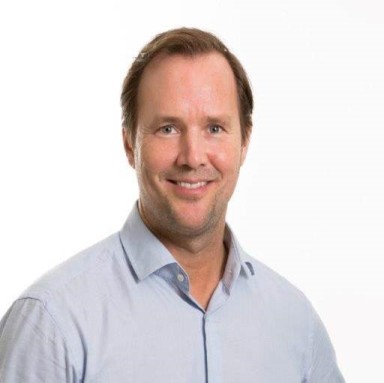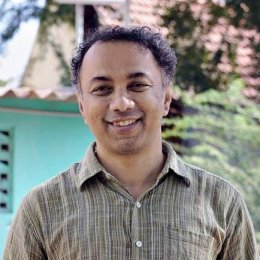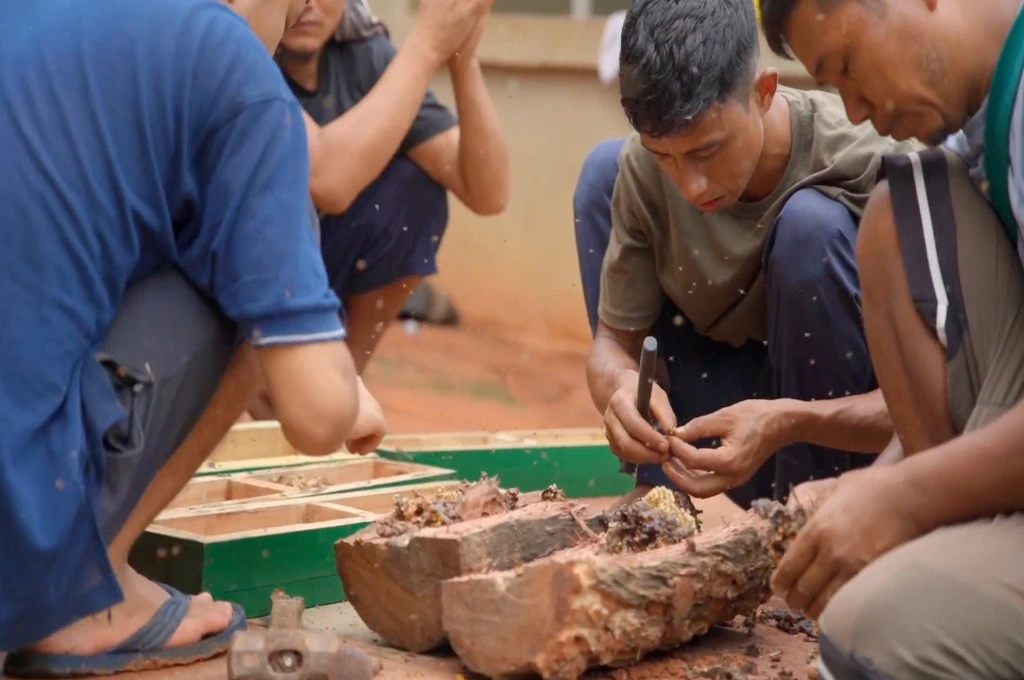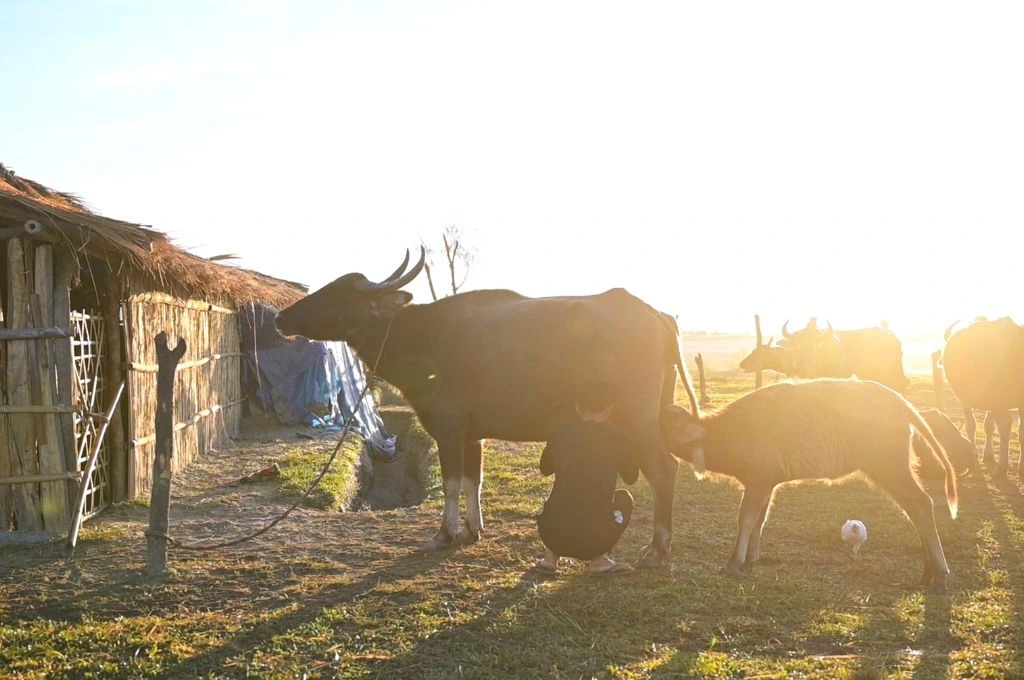In Jharkhand, a group of 20 women have come together to find ways to improve their community. Calling themselves the Kisan Mahila Mandal, they represent the interests of 300 small and marginal farming households. These farmers grow a local variety of black jeera rice, which they sell as well as consume.
For these farmers, the nearest rice mill was in a town 10 km away. The mill, large in scale, would primarily cater to large farmers bringing in large quantities of paddy to be hulled.
The transportation cost was too high for smaller farmers, making the mills inaccessible. So, small-scale farmers would sell their paddy to intermediaries at half or one-third the price they would have received for hulled rice. Without a decentralised mill, vulnerable farmers lose opportunities to add value to their produce and make their farming profitable, even at a small scale.

Related article: The future of rural India post-COVID-19
In the same region, the Kisan Mahila Mandal self-help group (SHG) set up a decentralised, solar-powered rice mill with the support of a local organisation, LEADS, and the State Livelihood Mission, a programme by the Indian government focussed on self-employment and building capacity among people living in rural poverty. The women in the group were not only connected to a rural bank for a loan to invest in their enterprise, but they also received training on running the business—for example, how to operate the machine and handle packaging, accounts, registers, and so on. A local enterprise provided a warranty and services the machine within 24 hours of a breakdown.
During COVID-19, the larger mills shut down because transportation restrictions cut down their access to larger markets and diesel became unavailable for their generators. The mill set up by the Kisan Mahila Mandal SHG, however, has been running regularly, securing livelihoods for the farmers and ensuring local families still have food to eat.
Why communities need local entrepreneurs and local energy services
The first half of 2020 has seen global economies erode. The COVID-19 pandemic has destroyed numerous hard-earned developmental gains, particularly in impoverished communities.
It has also proven that many of the safety nets built for people living in poverty have not been strong enough. A recent survey released in India reported that around 67 per cent of workers had lost livelihoods during the pandemic, and many more had seen loss in their incomes. This leads us to question whether the systems we built in the past were enough. Do we need to rebuild them, or should we rethink them completely?

Innovations for people living in poverty have to be decentralised and customised.
Across different sectors, the pandemic has caused disruptions in supply chains, higher costs of inputs, and inaccessible markets, while also reducing demands and paying capacities. That’s why resilience and decentralisation are two of the guiding principles that we must ingrain into our thinking.
In recent times, the majority of innovations in livelihoods and productivity have focussed on a centralised industrial scale—but the benefits do not trickle down and ownership does not transfer to households living in poverty. Innovations for people living in poverty have to be decentralised and customised. At the same time, ‘innovation’ should focus less on technology alone, and more on processes around ownership models, financial models, supply chains, and service delivery models, which allow for sustained impact.
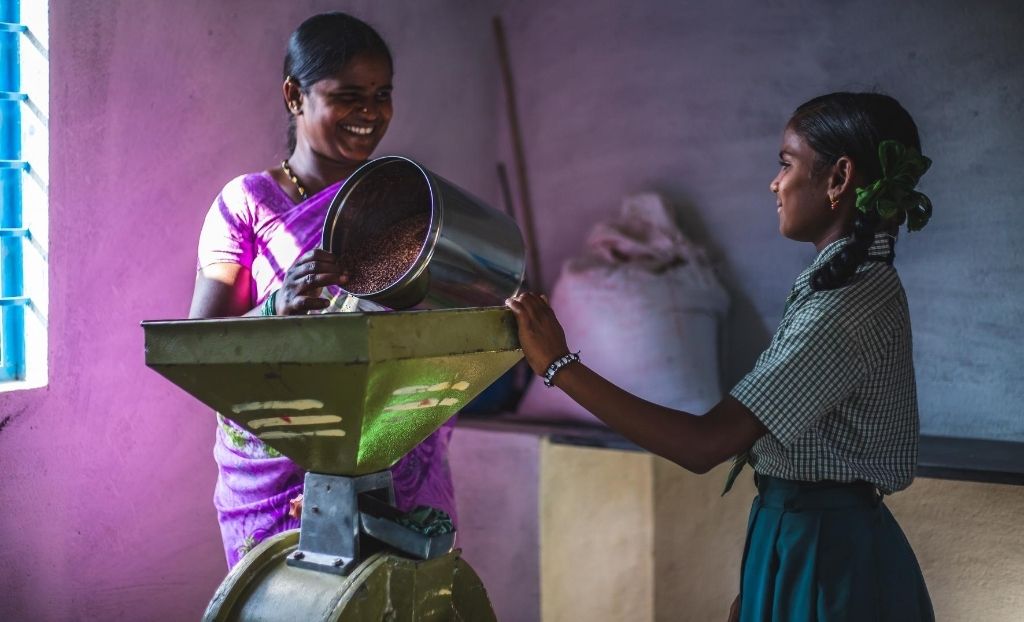
Models like the SHG would allow risks to be shared while also benefiting the whole community because services are decentralised. | Picture courtesy: SELCO Foundation
Sharing the risks and the benefits
The pandemic has had a varied impact on different livelihoods sectors. Crafts and textiles have seen reduced demand and broken market linkages, while the agricultural sector has faced unavailability of a number of services upon which it has previously relied. In particular, the large-scale aggregation of farmers and their produce to provide centralised services around production, post-harvest, and marketing.
One of the biggest challenges going forward will be the loss in risk-taking among entrepreneurs from households living in poverty.
During this period, insecurity has dramatically increased. Families face reduced earning potential, market erosion, and lack of local finance. Many enterprises and entrepreneurial endeavours have been built over years with numerous partnerships and many layers of financial resources. Now those have to be carefully built again, and this will take time.
For many entrepreneurs, restarting the business or taking the risk of building it again will be difficult. Models like the SHG’s would allow risks to be shared while also benefiting the whole community because services are decentralised. Government programmes such as the National Rural Livelihood Mission (NRLM) and National Bank for Agriculture and Rural Development (NABARD) in India could create incentives that allow communities to invest in assets and build enterprises.
Taking a fresh look at how we innovate in value chains
Also, as we see from the example of the Kisan Mahila Mandal SHG, value chains need to be understood from the perspective of the most vulnerable. This will allow for innovations in processes that strengthen systems and the potential of the complete value chain, and not just skew it towards one player.
Value chains need to be understood from the perspective of the most vulnerable.
Another example is in the dairy-farming value chain. Improving efficiency at a dairy farm will lead to only a certain threshold of efficiency, after which it would be important to focus on reducing input costs such as fodder, and market-access costs such as transportation to collection centres and so on. Such systemic interventions are possible using sustainable energy as a tool to innovate. For example, solar-powered mobile chilling vans can be used for collections, reducing dairy farmers’ transaction costs.
One of the bigger losses during this crisis would be if we don’t use this period to understand the weakest links in the value chains and innovate for decentralisation.
Related article: Routes to resilience in rural India
A call to build long-term resilience
Because of the crisis, there has been an unprecedented call for resilience of societies and local communities. COVID-19 has paved a way for us to innovate in a manner that could lead to greater equality by redirecting critical resources (both human and financial) to build foundational blocks for a more resilient society.
It has been estimated that about 70 to 100 million people globally will be pushed back into extreme poverty due to COVID-19. We need to relook at our approach to scaling employment opportunities and move away from providing large-scale incentives to large-scale industries to create large-scale jobs. Instead, we must provide large-scale incentives to a larger number of small-scale enterprises to create large-scale livelihoods, in a decentralised way.
The former leads to immediate but short-term jobs with extreme fragility, like the ones seen during this crisis. While the second approach will force us to keep equity at the centre, enabling us to build a more inclusive and prosperous future for the country.
—
Know more
- Learn more about how micro entrepreneurs were impacted by COVID-19 and how we can design resilient solutions for them using sustainable energy.
- Explore 65 livelihoods solutions by SELCO Foundation that employ the principles of decentralised innovation and sustainable energy access.
- Read about how investing in women’s networks and entrepreneurship helped India’s rural communities cope with the COVID-19 crisis.
Do more
- Write to info@selcofoundation.org or covid19@selcofoundation.org for more information, or to partner with them to strengthen rural livelihoods during COVID-19.

